| Date | Text | |
|---|---|---|
30 Nov 1909
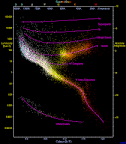
Hertzsprung–Russell diagram |
Hertzsprung–Russell diagram (astronomy) The Hertzsprung–Russell diagram is developed by Ejnar Hertzsprung and Henry Norris Russell. |
|
30 Nov 1909
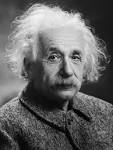
Albert Einstein |
Albert Einstein (chemistry) Albert Einstein and Marian Smoluchowski find the Einstein-Smoluchowski formula for the attenuation coefficient due to density fluctuations in a gas. |
|
30 Nov 1909

Umetaro Suzuki |
Umetaro Suzuki (chemistry) Umetaro Suzuki isolates the first vitamin complex, aberic acid. |
|
30 Nov 1909

Hoechst AG |
Hoechst AG (chemistry) Hoechst AG market Arsphenamine under the trade name Salvarsan, the first organic antisyphilitic, its properties having been discovered the previous fall by bacteriologist Sahachiro Hata during systematic testing in the laboratory of Paul Ehrlich; it rapidly becomes the world's most widely prescribed drug. |
|
30 Nov 1909

Alfred North Whitehead |
Alfred North Whitehead (mathematics) Publication of the 1st volume of Principia Mathematica by Alfred North Whitehead and Bertrand Russell, one of the most important and seminal works in mathematical logic and philosophy. |
|
30 Nov 1909
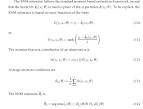
Econometrics |
Econometrics (mathematics) First known use of the term "Econometrics" (in cognate form), by Paweł Ciompa. |
|
30 Nov 1909
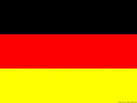
German |
German (physics) German physicist Theodor Wulf climbs the Eiffel Tower with an electrometer and discovers the first evidence of cosmic rays. |
|
30 Nov 1909

Hans Reissner |
Hans Reissner (physics) Hans Reissner and Gunnar Nordström define the Reissner-Nordström singularity; Hermann Weyl solves the special case for a point-body source. |
|
30 Nov 1909
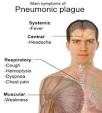
pneumonic plague |
pneumonic plague (physiology and medic) A form of pneumonic plague spreads through northeastern China, killing more than 40,000. |
|
30 Nov 1909

Thomas Hunt Morgan |
Thomas Hunt Morgan (physiology and medic) Thomas Hunt Morgan discovers that genes are located on chromosomes. |
|
30 Nov 1909

Chicago |
Chicago (physiology and medic) Chicago cardiologist James B. Herrick makes the first published identification of sickle cells in the blood of a patient suffering from anemia. |
|
30 Nov 1909

Peyton Rous |
Peyton Rous (physiology and medic) Peyton Rous demonstrates that a malignant tumor can be transmitted by a virus (now known as the Rous sarcoma virus, a retrovirus). |
|
30 Nov 1909

Hans Christian Jacobaeus |
Hans Christian Jacobaeus (physiology and medic) Hans Christian Jacobaeus of Sweden performs the first thoracoscopic diagnosis with a cystoscope. |
|
30 Nov 1909

George Owen Squier |
George Owen Squier (technology) Lieutenant-Colonel Dr. George Owen Squier of the United States Army invents telephone carrier multiplexing. |
|
30 Nov 1909

Delaware, Lackawanna and Western Railroad |
Delaware, Lackawanna and Western Railroad (technology) Completion of Delaware, Lackawanna and Western Railroad's Paulinskill Viaduct on its Lackawanna Cut-Off, the world's largest reinforced concrete structure at this time, built under the supervision of Lincoln Bush, its chief engineer. |
|
12 Jan 1910

Birth of public radio broadcasting |
Birth of public radio broadcasting (technology) Birth of public radio broadcasting: Lee De Forest conducts an experimental broadcast of part of a live performance of Tosca and, the next day, a performance with the participation of the Italian tenor Enrico Caruso from the stage of Metropolitan Opera House in New York City. |
|
17 Jan 1910

Friedrich Wilhelm Georg Kohlrausch |
death Friedrich Wilhelm Georg Kohlrausch Died 17 Jan 1910 at age 69 (born 14 Oct 1840). German physicist who investigated the properties of electrolytes (substances that conduct electricity in solutions by transfer of ions) and contributed to the understanding of their behaviour. Some of Kohlrausch's pioneering achievements include conductivity measurements on electrolytes, his work on the determination of basic magnetic and electrical quantities, and the enhancement of the associated measuring technologies. It was under his direction that the "Physikalisch-Technische Reichsanstalt" (the then Imperial Physical Technical Institute in Germany) created numerous standards and calibration standards which were also used internationally outside Germany. |
|
20 Jan 1910

Friederike Victoria Gessner, later Joy Adamson |
birth Friederike Victoria Gessner, later Joy Adamson Friederike Victoria Gessner, later Joy Adamson (died 1980), wildlife conservationist. |
|
09 Feb 1910

Jacques Monod |
birth Jacques Monod Jacques Monod (died 1976), biochemist, winner of Nobel Prize in Physiology or Medicine in 1965. |
|
13 Feb 1910

William Bradford Shockley |
birth William Bradford Shockley William Bradford Shockley (died 1989), physicist. |
|
27 Feb 1910
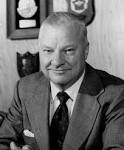
Kelly Johnson |
birth Kelly Johnson Born 27 Feb 1910; died 21 Dec 1990 at age 80. Clarence Leonard "Kelly" Johnson was an American aeronautical engineer who introduced introduced innovative designs. While managing Lockheed's secret project division, known as the “Skunk Works,” he contributed to more than 40 airplanes. His early work included the P-38 Lightning fighter (1938) and the Hudson bomber. Later, he developed the fastest supersonic and highest-flying airplanes in the world. The U-2 (1954) was the first plane designed for routine flight above 60,000 feet. The F-104 Starfighter interceptor (1954) was capable of flying at twice the speed of sound, setting world records of 1,400 mph and 103,000 ft altitude. |
|
11 Mar 1910

Robert Havemann |
birth Robert Havemann Robert Havemann (died 1982), chemist. |
|
17 Mar 1910

Smithsonian Institution |
Smithsonian Institution (institutions) The Smithsonian Institution's Natural History Building, later the National Museum of Natural History, opens its doors to the public in Washington, D.C. |
|
28 Mar 1910

Henri Fabre |
Henri Fabre (technology) Henri Fabre makes the first flights in a seaplane, at Martigues, France. |
|
03 May 1910

Howard T. Ricketts |
death Howard T. Ricketts Died 3 May 1910 at age 39 (born 9 Feb 1871). Howard Taylor Ricketts was an American pathologist who discovered the causative organisms and mode of transmission of Rocky Mountain spotted fever and epidemic typhus. In 1906, Ricketts, a Univeristy of Chicago pathologist, demonstrated that Rocky Mountain spotted fever is spread by cattle ticks and caused by a blood-borne "bipolar bacillus." In 1910 he showed that typhus is caused by a similar organism carried by lice. Ricketts was in Mexico City investigating the disease (known in Mexico, as tabardillo) that year when he was stricken by typhus and died at age 39. The two organisms Ricketts discovered were the first of what were later shown to be an unusual genus of virus-like bacteria - now named the Rickettsiae. |
|
03 May 1910

Helen M. Duncan |
birth Helen M. Duncan Helen M. Duncan (died 1971), geologist and paleontologist |
|
10 May 1910

Stanislao Cannizzaro |
death Stanislao Cannizzaro Died 10 May 1910 at age 83 (born 13 Jul 1826). Italian chemist, teacher, and legislator who recognized the distinction between atomic and molecular weights. He discovered the Cannizzaro reaction in 1853, that treatment of benzaldehyde with a concentrated alcoholic hydroxide produced equal amounts of benzyl alcohol and the salt of benzoic acid. Earlier, in 1851, he helped prepare cyanamide, while at the laboratory of Michel-Eugène Chevreul. In 1858, he showed that the atomic weights of the elements in the molecules of a volatile compound can be calculated using Avogadro's principle. Further, the atomic weights of non-volatile compounds can be calculated by a measurement of specific heat instead of vapour density. Later, 1861-71, he studied aromatic compounds and amines. |
|
12 May 1910

Dorothy Crowfoot Hodgkin |
birth Dorothy Crowfoot Hodgkin Dorothy Crowfoot Hodgkin (died 1994), chemist. |
|
12 May 1910
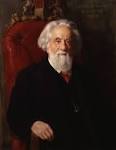
William Huggins |
death William Huggins William Huggins (born 1824), English astronomer. |
|
18 May 1910
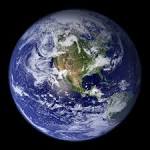
Earth |
Earth (astronomy) Earth passes through the tail of Halley's Comet. |
|
19 May 1910
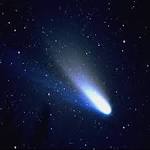
Halley's Comet |
Halley's Comet In 1910, the Earth passed through the tail of Halley's Comet, the most intimate contact between the Earth and any comet in recorded history. The event was anticipated with dire predictions. Since a few years earlier, astronomers had found the poisonous gas cyanogen in a comet, it was surmised that if Earth passed through the comet's tail everyone would die. Astronomers explained that the gas molecules within the tail were so tenuous that absolutely no ill effects would be noticed. Nevertheless, ignorance bred opportunists selling "comet pills" to the panicked portion of the public to counter the effects of the cyanogen gas. On 20 May, after Earth had passed through the tail, everyone was still alive - with or without taking pills! |
|
27 May 1910

Robert Koch |
death Robert Koch Robert Koch (born 1843), German bacteriologist. |
|
07 Jun 1910

Allen Manufacturing Company |
Allen Manufacturing Company (technology) William G. Allen of the Allen Manufacturing Company is granted a United States patent for a hex key. |
|
11 Jun 1910

Jacques-Yves Cousteau |
birth Jacques-Yves Cousteau Jacques-Yves Cousteau (died 1997), oceanographer. |
|
22 Jun 1910

Richard Wetherill |
death Richard Wetherill Died 22 Jun 1910 at age 52 (born 12 Jun 1858). explorer and archaeologist who discovered the Cliff Palace, Mesa Verde, ruins on 18 Dec 1888 near Mancos, Colorado. He subsequently was involved in its excavation, and became perhaps the most influential amateur archaeologist of the late 19th century. Wetherill was a rancher searching for missing cattle when he came upon the Cliff Palace, which is now preserved in the Mesa Verde National Park. He also discovered the Spruce Tree House. After 14 years exploring the archaeology of the region, he was instrumental in the establishment of Chaco Canyon National Monument. He died by murder, shot following a dispute over the theft of horse. |
|
22 Jun 1910

Konrad Zuse |
birth Konrad Zuse Born 22 Jun 1910; died 18 Dec 1995 at age 85. German engineer who in 1941 constructed the first fully operational program-controlled electromechanical binary calculating machine, or digital computer, called the Z3. Earlier, Zuse developed and built the Z1 the first binary digital computer in the world (1936-8) and two more machines before the end of WW II, but he was unable to convince the Nazi government to support his work. He created a basic programming system known as Plankalkül with which he designed a chess playing program.The Z3 was destroyed in 1944 during the war. Next came the more sophisticated Z4, which was the only Zuse Z-machine to survive the war, by several moves to new locations away from air raids. During the last days of war it was hidden. In 1950, he took it to Zurich. |
|
04 Jul 1910

Giovanni Schiaparelli |
death Giovanni Schiaparelli Giovanni Schiaparelli (born 1835), Italian astronomer. |
|
15 Jul 1910
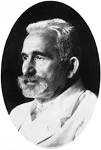
Emil Kraepelin |
Emil Kraepelin (physiology and medic) Publication of the eighth edition of Emil Kraepelin's Psychiatrie: Ein Lehrbuch für Studierende und Arzte, naming Alzheimer's disease as a variety of dementia. |
|
16 Jul 1910

David Lack |
birth David Lack David Lack (died 1973), ornithologist. |
|
29 Jul 1910

Heinz L. Fraenkel-Conrat |
birth Heinz L. Fraenkel-Conrat Born 29 Jul 1910; died 10 Apr 1999 at age 88. German-American biochemist who was the first to establish that reproduction of a virus is controlled by genetic information within its ribonucleic acid (RNA) core. His pioneering work was with the tobacco mosaic virus (1955), which he first disassembled into its hollow protein shell and the ribonucleic acid inside. Having taken care than neither portion was seriously damaged, he was then able to reassemble them as a live virus. He found that the protein was inert, but proved conclusively that the RNA genetic material was the infectious agent. He was the first scientist to show that virus molecules, still retaining viral life, could be thus reconstituted from its separated protein and RNA. |
|
12 Aug 1910
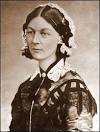
Florence Nightingale |
death Florence Nightingale Florence Nightingale (born 1820), English nurse. |
|
15 Aug 1910

Constantin Fahlberg |
death Constantin Fahlberg Died 15 Aug 1910 at age 59 (born 22 Dec 1850). Russian chemist who, while working for Ira Remsen on coal tar compounds, discovered saccharin (anhydroorthosulphaminebenzoic acid), in a synthesis from toluene. The compound is 220 times sweeter than cane sugar. Initially called benzoic sulphinide, Fahlberg coined the trade name “saccharin” (from the Latin word for sugar). With his uncle, Dr. Adolph List, he established a saccharin factory in in Magdeburg, Germany (1896), known as Fahlberg-List. He obtained a patent in Britain in 1886, and several patents in America. beginning with U.S. No.326,281 (issued 15 Sep 1885). What Fahlberg initially prepared in gram quantities in the laboratory, he turned into a product manufactured in ton quantities, making him wealthy. During the 1960s to 2000, saccharin was suspected as a carcinogen, but is now regarded as safe. |
|
01 Oct 1910

infrared photographs |
infrared photographs (technology) First publication of infrared photographs, by American optical physicist Robert W. Wood in the Royal Photographic Society's Journal. |
|
03 Oct 1910

Lucy Hobbs Taylor |
death Lucy Hobbs Taylor Died 3 Oct 1910 at age 77 (born 14 Mar 1833). Lucy Beaman Taylor (née Hobbs) was an American dentist who was the first woman dentist in America to graduate (1866) from a dental college as a Doctor of Dental Surgery. Earlier, being long refused admission to dental schools (1859-65), she had acquired the skills of dentistry, and practiced without a diploma, as was common at the time. Then the Iowa State Dental Society supported Lucy's ambition for a college degree, demanded her admission, and she was accepted by the Ohio College of Dentistry. After graduation, she practiced for a short time in Chicago, then married James M. Taylor and taught him dentistry. The couple moved to Lawrence, Kansas, in December, 1867, opened a joint office and soon enjoyed a prosperous practice (1867-86). |
|
11 Oct 1910

Heinrich Caro |
death Heinrich Caro Died 11 Oct 1910 at age 76 (born 13 Feb 1834). German chemist who invented new industrial chemical processes that enabled the German company BASF (Badische Anilin und Soda Fabrik) to become the leading manufacturer of synthetic dyestuffs for two decades from 1869. Before joining them (1866), he benefitted from time he spent in England, working on mauveine (the first synthetic dye) and learning about the new synthetic dyes William Perkins had developed. Caro improved upon those methods of synthesis. Caro propelled the rise of the German dye industry, which led to Germany’s wider dominance in industrial chemistry, and the emergence of the industrial research laboratory. He helped synthesize artificial alizarin (a natural dye), discovered methylene blue (1877), the first acidic azo dye (1878), and the powerful oxidizing agent, Caro's acid, H2SO5 (1898). |
|
11 Oct 1910
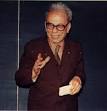
Cahit Arf |
birth Cahit Arf Cahit Arf (died 1997), mathematician. |
|
14 Oct 1910
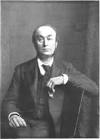
Sydney Ringer |
death Sydney Ringer Died 14 Oct 1910 (born 1835). English physician. |
|
31 Oct 1910

Victor Rothschild |
birth Victor Rothschild Victor Rothschild (died 1990), polymath. |
|
19 Nov 1910

Rudolf Fittig |
death Rudolf Fittig Died 19 Nov 1910 at age 74 (born 6 Dec 1835). German organic chemist who is famous for his extensive work synthesizing of organic compounds in the late 19th century. The action of sodium on organic compounds discovered by Wurtz (1817–84), was extended by Fittig using a mixture of an aromatic and alkyl haloid to produce homologues of benzene. Fittig prepared pinacones (which he named), diphenyl, phenanthrene (1872), coumarone (1883), toluene (with Tollens in 1864), and many other substances. He separated several aromatic compounds from coal tar, studied the reactions of unsaturated acids. Fittig proposed the correct structures for the quinones and (1871, with Ira Remsen) for the alkaloid piperine that gives the spice black pepper its taste and smell . |
|
03 Dec 1910

Georges Claude |
Georges Claude (technology) Georges Claude demonstrates the first modern neon light at the Paris Motor Show. |
|
05 Dec 1910

Christian Archibald Herter |
death Christian Archibald Herter Died 5 Dec 1910 at age 44 (born 3 Sep 1866). American physician who investigated the role of bacteria in the gastrointestinal tract and developed techniques for measuring their products such as indol. Herter's early research interests culminated in the publication of The Diagnosis of Diseases of the Nervous System (1892). He then shifted his attention to the biochemical study of disease. In 1893 had the upper floor of his house remodelled so that he could carry out laboratory work. Examining the biochemistry of metabolic disorders and the formation of gallstones and glycosuria. He was commissioned by President Theodore Roosevelt to examine the possible effects of sodium benzoate in its use in food preservatives and from the investigation concluded that it was perfectly safe. |
|
24 Dec 1910

William Hayward Pickering |
birth William Hayward Pickering William Hayward Pickering (died 2004), head of NASA's Jet Propulsion Laboratory. |